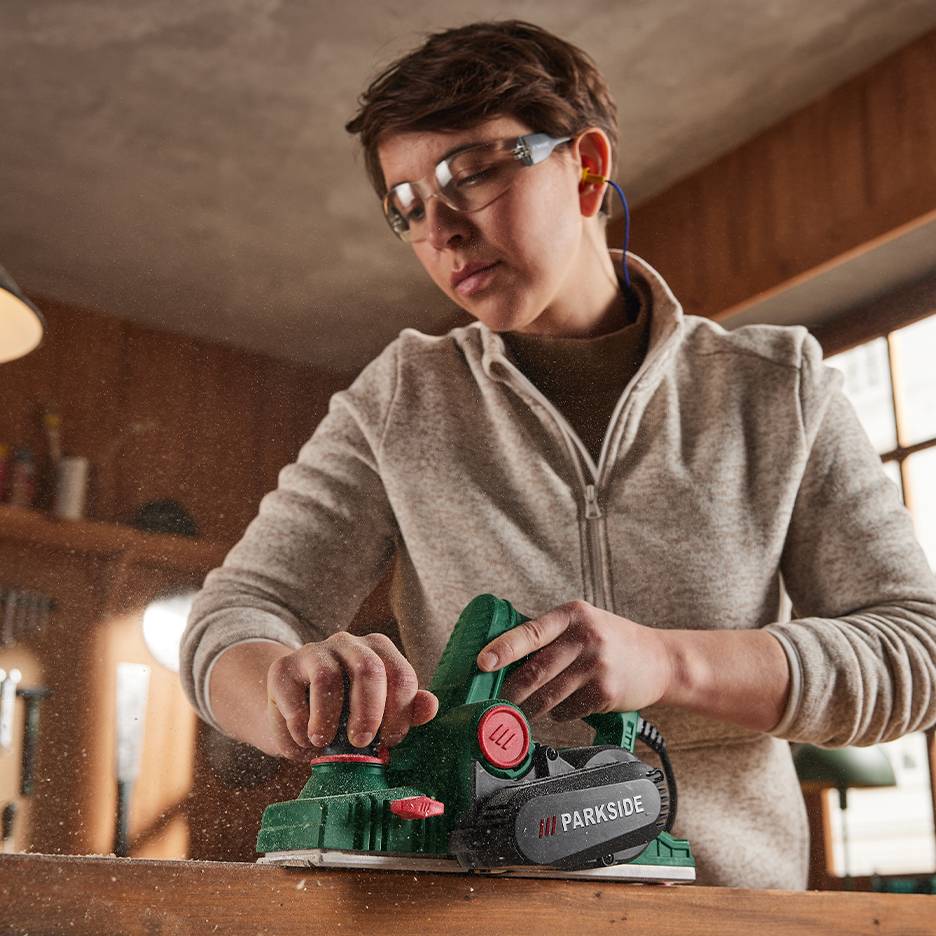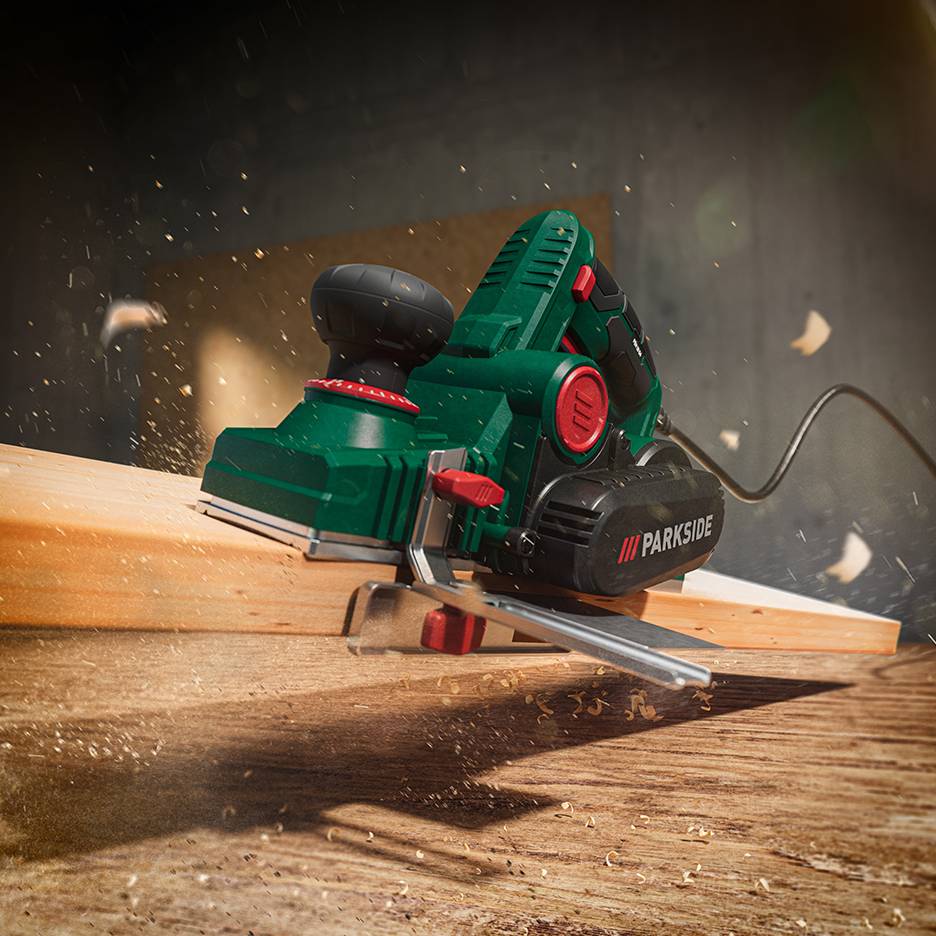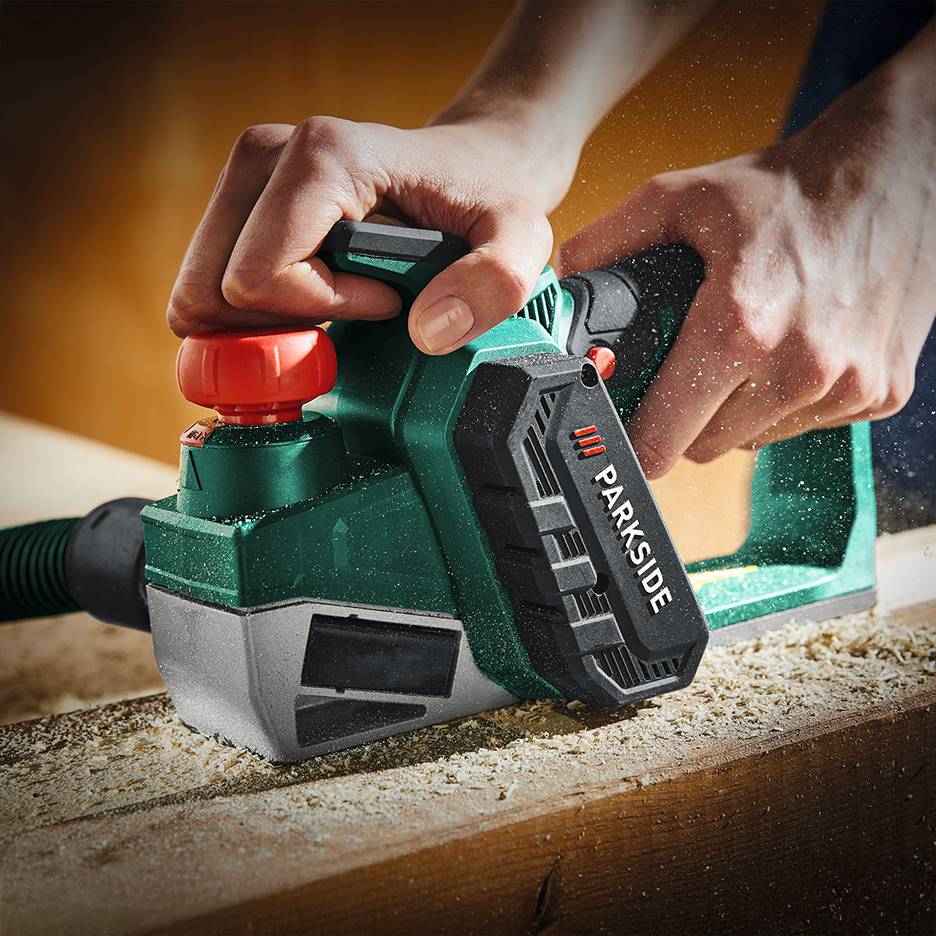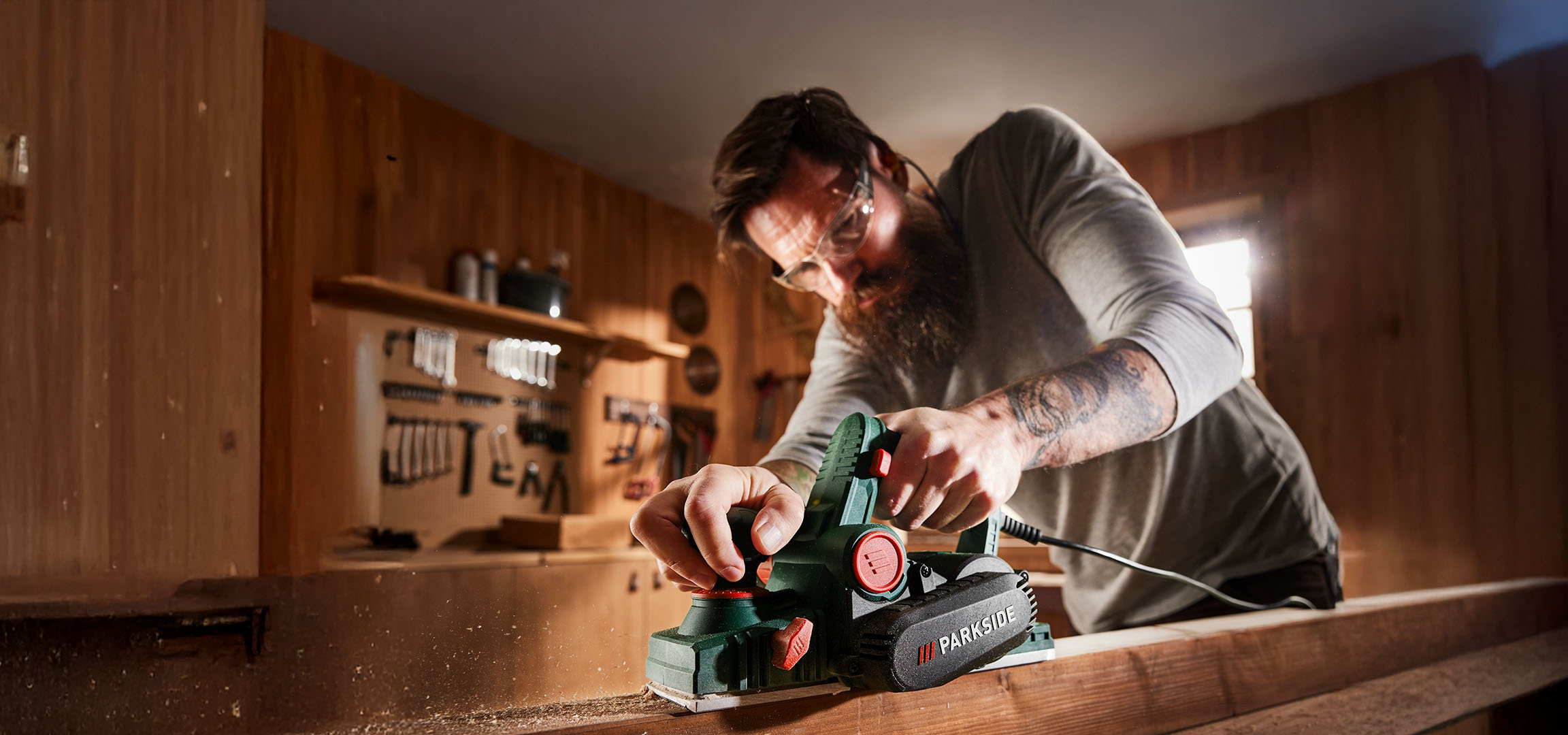Correct planing: Chips fall here
Like drilling or sawing, planing is a woodworking method used to level and smooth surfaces. Nowadays, not only the hand plane but also the modern electric plane is used for these work steps.
In this article, you'll find the practical tips, step-by-step instructions for planing straight wood surfaces, and answers to the most frequently asked questions about planing, so you're prepared for any eventuality.
Do you want to adjust your plane iron correctly or simply sharpen it to achieve particularly good results? Then check out our other articles on the topic of planing!

The plane: A definition
A plane is used to remove chips from the surface of a workpiece. For example, you can plane different types of wood, reduce the thickness of the material, or smooth surfaces. There are basically three different versions of the plane: Wood plane, metal plane and electric plane.
All have the following basic elements:
- Plane body: The plane rest guides the knives or plane irons, which remove the shavings.
- Plane iron or knife: The blade cuts the chips from the material and “processes” it.
- Clamping device: It fixes the plane iron.
The wood plane and the metal plane are the hand tools. However, these are not named after the material to be processed, but differ in the structure of the plane body. The wood plane consists of a wooden structure, whereas the body of the metal plane is made of tool steel. The electric plane is driven by an electric motor with a toothed belt and works similarly to a milling machine. It has two or more knives that remove material quickly and precisely. All three devices are ideal for planing.
Info
The hand plane is a tool for complex, fine woodwork, such as furniture making. The electric plane is well suited for rough work such as planing planks and floorboards.
4 tips for proper planing
With a few tips and tricks, different types of wood can be easily worked with both a hand plane and an electric plane.

Tip 1: Check your tools.
The sharp plane knives or irons are essential when planing, ensuring the wood grain is not torn but cut precisely. Therefore, the knife should be removed from the surface as soon as unevenness occurs. If the knife is uneven, it needs to be resharpened. For example, a combination stone with a grain size of 1000 to 6000 is suitable for this purpose. The electric planes are usually equipped with the interchangeable knives that can be turned over once they become blunt. They are not re-sharpened, but replaced as they wear out.
Select the cutting angle according to the material.
The cutting angle refers to the angle between the cutting surface of the knife and the wood surface. When planing, it adapts to different types of wood:
Wood type | Angle |
|---|---|
Soft wood | 35°-45° |
Broadleaf wood | 40°-55° |
Tropical wood | 50°-65° |

Tip 3: Do not remove too much material
To achieve an even surface, do not remove too much material at once. The plane iron can be adjusted to a low removal rate of 1.5 mm. The surface is treated in several passes to achieve the optimal results. The planing depths of 2.0 to 3.0 mm, on the other hand, are useful when beveling edges. Tip 4: Operating the plane. When planing, not only arms and hands work, but the whole body. The stable position at the side of the workbench supports the development of strength. With each movement, a body swing is performed. The plane should be guided with little pressure at the beginning. Only at the end of the movement is the pressure increased.
Questions & Answers
When using a hand plane, the correct technique is crucial. Although the work requires more effort and time compared to the electric plane, the surface result benefits. Planing large surfaces is much faster with the electric plane, but the result is usually of poorer quality. In addition, if the tool is used incorrectly, the fine lines perpendicular to the planing direction, so-called planing marks, can appear on the surface.
Unlike the grinding tools, a plane cuts the wood surface layer by layer using a sharp plane iron. Abrasives, on the other hand, are made with mineral grains and remove the material through friction. The difference is especially noticeable when treating wood with water-based products such as stains or varnishes. The cut wood surfaces shine, while the grinding finish appears matte. However, if large areas need to be processed as quickly as possible, the electric grinding tool is recommended.
Ideally, the planing should always be done in the direction of the grain to achieve the smoothest and shiniest surface possible. However, wood is a natural material, and the grain may not be evenly distributed, especially in the knotty wood. It is therefore advisable to do a test plane at the beginning of the work in order to determine the direction of the grain. If the wood begins to split along the grain, you should change the direction of planing. In difficult cases, the planing can also be done diagonally to the grain.
A plane can be used for a variety of jobs.
Examples:
- Bevel: Beveling and rounding edges
- Grooving: The step milling, for example as a joining method in furniture manufacturing
- Trim: Adjustment of furniture, windows, doors, etc. to restore functionality.
- Adjusting the warped wood, such as pullout drawers
Regardless of the type of work, care should be taken to ensure that the planing tool is always sharp in order to effectively avoid the breaking out
Conclusion
Planing is purely a matter of practice: The more often you do it, the better the results. In comparison, using a hand plane requires more practice than using an electric plane, which allows large areas to be worked on quickly and efficiently. For many DIY enthusiasts, it is therefore useful to have both a small-format hand plane and a practical electric plane in the tool cabinet

